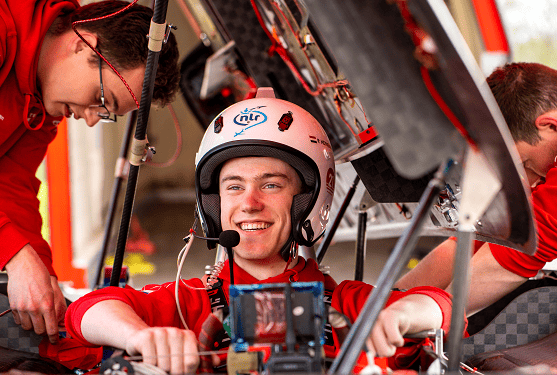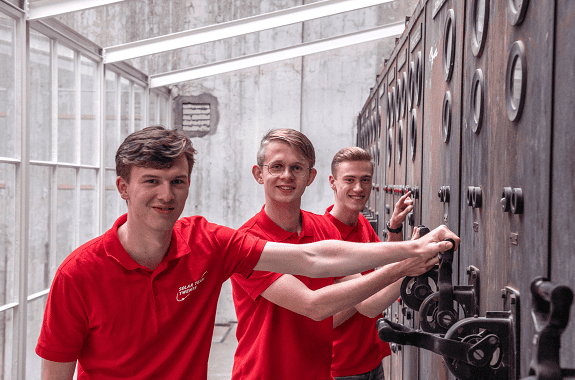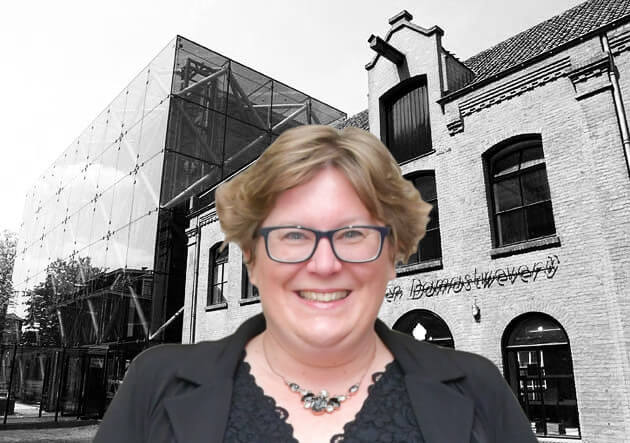
Innovation is not just about technology. Steve Jobs once said, “It’s in Apple’s DNA that technology alone is not enough. It’s technology married with liberal arts, married with the humanities, that yields us the results that makes our heart sing”. Innovative breakthroughs occur precisely at the intersection of disciplines, ‘this is where the magic happens’. At the same time, interdisciplinary collaboration often sounds better than it is. After all, each discipline speaks its own language and has its own values that are important. How do you make sure that at the crossroads of disciplines there is no fuss but magic? To find an answer to that question, we follow Solar Team Twente, from the initial development phase to the finishing line at the Bridgestone World Solar Challenge in Adelaide. Each time, a different discipline within the team takes centre stage, with this time the electrical engineers.
- Solar Team Twente demonstrates how different fields collaborate to achieve innovative breakthroughs
- The electrical engineers in the team work together to optimize the energy flow in their solar car design
- The team values teamwork, resilience, and building trust
The electrical engineering team is formed by Jelle de Haan, Jorian Zwerver and Yvar van der Bijl, all three Electrical Engineering students at the University of Twente. In doing so, Jelle focuses on the electric motor, Jorian on the battery and Yvar on the solar panel. Although the tasks are well divided, they work together an awful lot and have lots of consultations. After all, everything has to be coordinated with each other. The men explain it in simple language: the solar panel is the input, the electric motor is the output, and any energy left over goes into the battery. It sounds so simple, but of course that’s not the case. Yvar: “the industry is moving fast, everything gets better every year. That’s why we develop a completely new system every edition of the Solar Challenge.”
The technical team develops everything by itself, except the battery and solar cells. The team buys those. In that procurement process, the men are critical. The students request options from different companies and calculate them in their model. This internalisation turns out to be important. Jorian: “Sometimes companies give us figures that turn out to be too good to be true”. The big difference between the Solar Team and the partner companies is that the Solar Team students can change everything in order to be a few minutes faster in the race. For them, scale does not play any role in this. It is precisely that scale that is an issue with companies. That creates a different focus.

A little mistake
Currently, the team is entering the production phase. This is an exciting moment. Yvar: “a single production error can wipe out all the other gains made”. So it comes very close. That is why the students prefer to research and test as much as possible beforehand, but at some point they have to actually start production so they can see whether everything really works. Jorian: “at some point there is a ‘point of no return’, which is exactly where we seem to be right now”.
Cooperation within the team is going very well. The students didn’t know each other beforehand, but that changed very quickly during the European Solar Challenge at the beginning of the project. Jelle: “the European Solar Challenge was a tough race. We barely knew each other and all sorts of things went wrong. But that same evening we showed resilience and I saw the team’s real potential. That gave a boost in confidence. I thought: okay, now things didn’t go well, but with this mindset, we will get there”. In the last half hour of the European Solar Challenge, the whole team stood along the pit wall cheering for a driver who had had a lot of problems before. Jorian: “if I had to sum up this project in one photo, it would be that moment. That’s when we were really one together”.

Race minutes
Soon, they will have a 24-hour team building with the entire team to be well prepared together for the final race in Adelaide. Yvar: “Of course that’s fun, but it does mean that you can’t spend that day making the car better. Precious time is at stake. The electrical engineers obviously prefer to be working on improving the car, but they also understand very well that they also need to invest in the team. Jorian: “you not only want to be a close-knit team, but also a healthy team where everyone trusts each other. You don’t pump up that trust just before the race, you have to cultivate it. It will be very intense later during the race in Australia and then you have to be able to trust each other blindly”. Yvar adds: “we constantly think in race minutes and with team building you end up winning race minutes”.
The three students are unanimous: you learn more from a project like this than in the study banks. Jelle: “I secretly learnt the most about working in projects, something I hadn’t expected beforehand. How do you work together with a large team? How do you deal with partners? You actually gain the most skills on those kinds of issues”. Yvar adds: “multidisciplinary cooperation sounds nice, but you don’t have a picture of that at all beforehand. Now I discover that every sub-team, every discipline, has its own characteristics. I grow from being allowed to work with so many different people”. All those different character traits were also revealed at the beginning of the project when a personality test was administered to each participant. Yet the men did not immediately realise how these different personalities would work differently in practice. Jorian: “Only later do you discover that some people come up with completely different solutions than you would come up with yourself, that is really interesting to see”. The three electrical engineers therefore have every confidence in the final result. They are going to win, that’s for sure.


